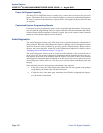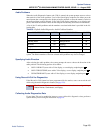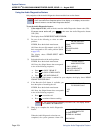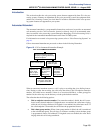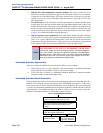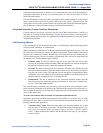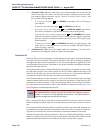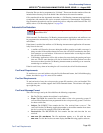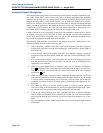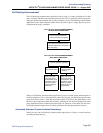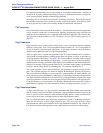
Voice Processing Features
INTER-TEL
®
CS-5200/5400 ADMINISTRATOR GUIDE, ISSUE 1.1 – August 2005
Introduction
Page 259
Introduction
This section describes the voice processing system features supported by Inter-Tel voice pro-
cessing systems. Features are dependent on the voice processing system, the equipment used,
and the site’s licensing. Contact your local Inter-Tel reseller to determine which voice process-
ing system features are supported on your system.
Automated Attendant
The automated attendant is a programmable feature that can be used to provide an automated
call answering service. Calls can transfer, forward, or directly ring in to an automated atten-
dant. An external voice processing system (Enterprise Messaging or Voice Processing Unit) is
required for the Automated Attendant feature on the Inter-Tel 5000 system.
For information on external voice processing systems, refer to “Voice Processing Systems” on
page 16.
Calls to Automated Attendant are processed as shown in the following illustration.
Figure 16.
Call to Automated Attendant Example
.
When an automated attendant answers a call, it plays a recording that gives dialing instruc-
tions. During or after the recording, the caller may then directly dial an endpoint extension
number, Voice Mail access number (if there is no associated mailbox), or hunt group pilot
number. Or, the caller may use the directory to look up the desired extension.
The caller then has the following options:
• Dial an endpoint extension number: If an extension number is dialed, the call is trans-
ferred to the selected endpoint. If ringback tones are enabled, the caller hears ringing
while the call is being transferred. If ringback is not enabled, the caller hears music. If
the called endpoint is forwarded, the call follows the programmed forward.
• Dial a hunt group number: When a hunt group number is dialed, the call is transferred
to the selected hunt group. The call rings or circulates according to how the hunt group
is programmed (linear or distributed). If ringback tones are enabled, the caller hears
ringing while the call is being transferred.
CALL TO AUTOMATED ATTENDANT
Automated Attendant answers
and plays a greeting followed by
a menu of options.
Caller selects option
Caller does not
select an option
Call is sent to endpoint,
hunt group, Voice Mail,
or operator destination.
Caller uses the
directory and
can select the
name of
desired party.
Call is sent to
endpoint, hunt
group, Voice
Mail, or opera-
tor destination.
Call is sent to
the Automated
Attendant’s
designated
dial-0 operator.




